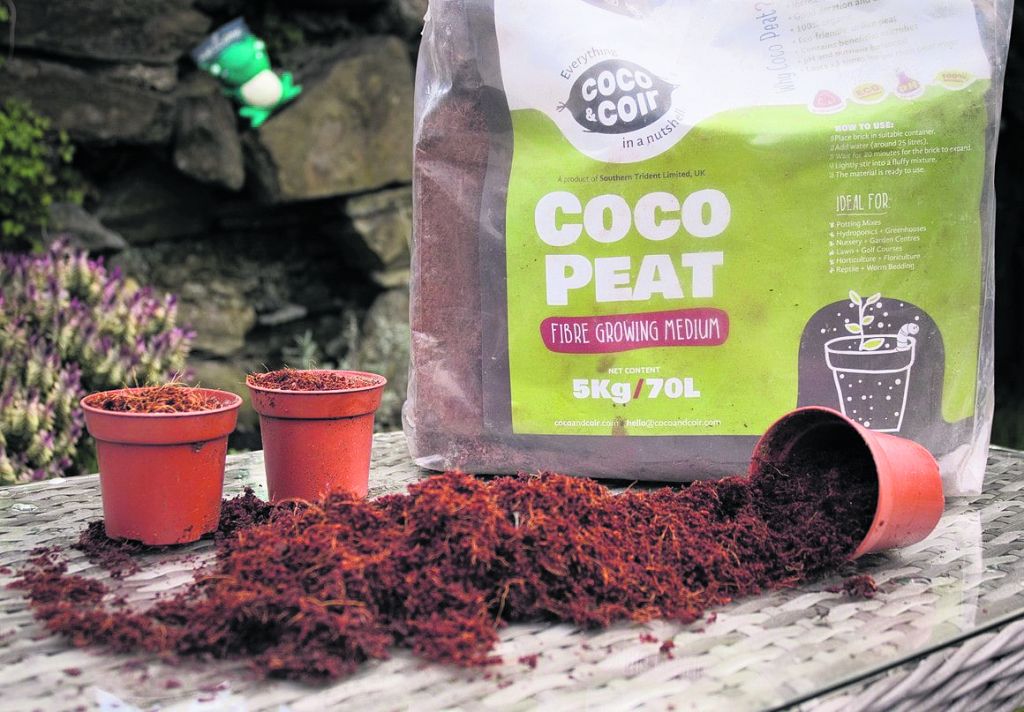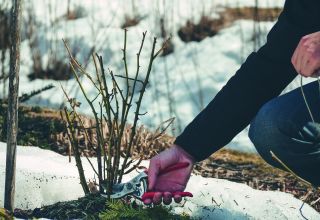As the charity Garden Organic launches a campaign for peat-free gardening, we look at alternatives for the new gardening season.
It is clear that record numbers of gardeners are now looking for peat free options as they become more environmentally aware –but it is clearly not easy going.
Peat alternatives offer a greater challenge for the everyday gardener both in terms of product manufacture and plant management but peat-free products are improving and good products already exist.
Peat alternatives are now being developed using materials such as bark, wood fibre, coir, bio solids, bracken and green compost. Several decades of research went into perfecting horticultural techniques using composts containing peat, so it will take time for the same thing to happen with the peat alternatives.
The important thing is that gardeners are aware that the peat alternatives all need to be managed differently.
Some of the alternatives are made from locally collected waste material, which is processed into a growing media product. By supporting local, environmentally friendly peat alternatives – as an alternative to foreign peat extraction – gardeners will help forestry and composting industries in Britain. The environmental impact of transport is also reduced.
The fact is peat alternatives should not be treated in the same way as peat; gardeners should not assume that all plants will perform in the same way.
Traditionally peat has also been used for soil improvement and ground mulching but other materials are better suited to these tasks than peat.
Soil can be improved by incorporating well-rotted animal manures or composted plant remains; both materials can also be used for mulching, along with wood chips, wood shavings, bark and other materials.
Garden Organic says that the garden industry has done too little too late to meet Defra’s demand to stop retail sales of peat by January 2020 has been missed and has launched its ‘For Peat’s Sake’ campaign to push the issue to the top of the political agenda.
Choosing a peat-free compost can cause headaches for gardeners, and different varieties come with different approaches for caring for plants.
The RHS notes that peat-free brands often recommend specific fertilisers for use with their compost. This is not a marketing ploy, as different formulations have different balances of nutrients.
Manufacturers have formulated ericaceous peat-free compost, adding pine bark and sulphur, which will benefit these plants.
You can create your own soil mixes using home-made compost, top soil and leafmould.
Sowing seeds: Seeds contain their own nutrients so they will germinate successfully in low nutrient material, with good drainage. Recommended mix: one part loam (garden soil), one part leafmould, one part horticultural sand.
Potting on: Seedlings and young plants need excellent drainage and a little more nutrient (not too much, or they become leggy without finding their own strength). Recommended mix: one part loam (garden soil), one part leafmould, one part sieved garden compost.
Taking cuttings: Cuttings need excellent drainage (so their ends don’t rot) and a fine textured medium (to help the roots establish). Recommended mix: half sharp sand and half home compost (or a purchased peat-free growing medium such as coir).
Planting herbs: Sage, thyme and marjoram all need a well-drained soil. It is the wet, not the cold, that will kill their roots. Recommended mix: one part loam, one part home compost, one part sharp sand.

Peat free gardening
- Buy the right compost for the job by reading the label
- Different watering and feeding techniques mean you must research your options to understand the specific instructions for caring for your plants before choosing the right compost
- The descriptions ‘Environmentally friendly’, ‘compost’ and ‘organic compost’ are not always peat free
- Coir-based composts can look dry on the surface but may still be wet underneath, so you have to watch your watering
- Some plants are more tricky to grow in peat-free compost
- Historically, it has been more difficult to grow acid-loving plants like rhododendrons and camellias in peat-free compost
Does organic mean peat-free?
Not necessarily. Check the labels – ‘reduced peat’ means there is still peat there, sometimes as much as 90 per cent, warns Garden Organic. The organisation also urges gardeners to ignore claims of ‘not from an environmentally sensitive site’ as all peat bogs are sensitive habitats. And it flags that the word ‘organic’ doesn’t necessarily mean peat-free.
It is a type of soil made up of waterlogged, partially decomposed plant material which has built up over nearly 10,000 years in wetland habitats.
Historically, peat has been used in compost because it’s good at holding water and retaining nutrients.
Ninety-five per cent of the UK’s peat bogs are now degraded or completely destroyed, meaning it would take 1,000 years before they could start functioning again.
Peat bogs are an important defence against climate change as they are the most efficient land-based store of carbon. Destroying them releases huge amount amounts of carbon dioxide into the atmosphere, having the opposite effect.
When peat is mined we unlock reserves of stored carbon. Three things then happen:
A peat bog is drained prior to mining. It immediately starts emitting greenhouse gases. After mining, the remaining peat continues to release carbon dioxide and methane into the atmosphere.
The carbon in peat, when spread on a field or garden, quickly turns into carbon dioxide, adding to greenhouse gas levels.











